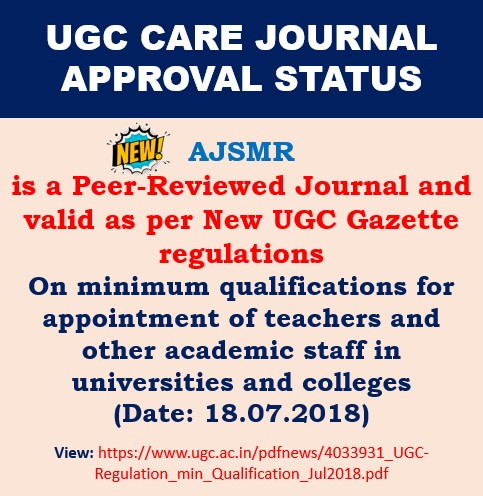Original Research Article I Volume 5 I Issue 4 I 2019
In silico Molecular Docking Studies of compounds from Rumex vesicarius against Pancreatic α-Amylase
Rakesh Davella and Estari Mamidala
The American Journal Science and Medical Research; 5(4); 1-10
DOI:https://doi.org/10.5281/zenodo.7188942
Abstract:
In spite of the global occurrence of type-2 diabetes mellitus (T2DM) infection and lack of auspicious treatment for Diabetes patients, there are only a few drugs accepted for the managing of infected patients. There is an urgent need to discover newer anti-diabetic drugs with novel mechanism of action and with efforts to reduce attrition rate in early drug discovery stages. The objective of this study is the evaluation of Rumex vesicarius compounds for anti-T2DM activity. In silico anti-T2DM lead prioritization was performed on a set of known compounds from R. vesicarius medicinal plant. The energy minimized structures of these molecules were docked into Pancreatic α-Amylase. Docking experiments were done using Autodock software for seven compounds docking with α-Amylase. Rhein was found to be a lead with better docking scores. The results showed that there is scope for the improvement of activity of Isovitexin analogs to discover a potent anti-T2DM compound.
Keywords:
Docking, Pancreatic α-Amylase, Rumex vesicarius, Diabetes mellitus
References:
[1]. S. Ramachandran, A. Rajasekaran, and N. Adhirajan, “In vivo and in vitro antidiabetic activity of Terminalia paniculata bark: an evaluation of possible phytoconstituents and mechanisms for blood glucose control in diabetes,” ISRN Pharmacology, vol. 2013, Article ID 484675, 10 pages, 2013.
[2]. B. A. Sheikh, L. Pari, A. Rathinam, and R. Chandramohan, “Trans-anethole, a terpenoid ameliorates hyperglycemia by regulating key enzymes of carbohydrate metabolism in streptozotocin induced diabetic rats,” Biochimie, vol. 112, pp. 57–65, 2015.
[3]. G. Winkler, T. Hidvegi, G. Vandorfi, S. Balogh, and G. Jermendy, “Risk-stratified screening for type 2 diabetes in adult subjects: results from Hungary,” Diabetologia, vol. 54, p. S119, 2011.
[4]. Maitra A, Abbas AK. Endocrine system. In: Kumar V, Fausto N, Abbas AK (eds). Robbins and Cotran Pathologic basis of disease (7th ed) 2005. Philadelphia, Saunders; 1156-1226.
[5]. Madhavashetty K Dr,Shivaji K, Tulasirao K, Flowering plants of Chittoor district, Andhra Pradesh, India;298.
[6]. Elegami, A.A.; Almagboul, A.Z.; El faith, M.A.O. and El Tohami, M.S.: Sudanese plants used in folkloric medicine: Screening for antibacterial activity. Part X. Fitoterapia 2001;72: 810-817.
[7]. Al‐Quran, S.: Ethnopharmacological survey of wild medicinal plants in Showbak, Jordan. Journal of Ethnopharmacology 2009; 123 : 45-50.
[8]. Kandra, L. α-Amylases of medical and industrial importance. J. Mol. Struct. THEOCHEM, 2003, 666, 487-498.
[9]. Nickavar, B., and Abolhasani, L. (2013) Bioactivity-guided separation of an -amylase inhibitor flavonoid from Salvia virgata. Iran. J. Pharm. Res. 12, 57–61
[10]. Yadav, R., Bhartiya, J. P., Verma, S. K., and Nandkeoliar, M. K. (2013) The evaluation of serum amylase in the patients of type 2 diabetes mellitus, with a possible correlation with the pancreatic functions. J. Clin. Diagn. Res. 7, 1291–1294...
Article Dates:
Received: 11 October 2019; Accepted: 21 December 2019; Published: 28 December 2019
How To Cite:
https://doi.org/10.5281/zenodo.7188942 Received : 11 October 2019 Accepted; 21 December,2019 Available online : 28 December,2019



